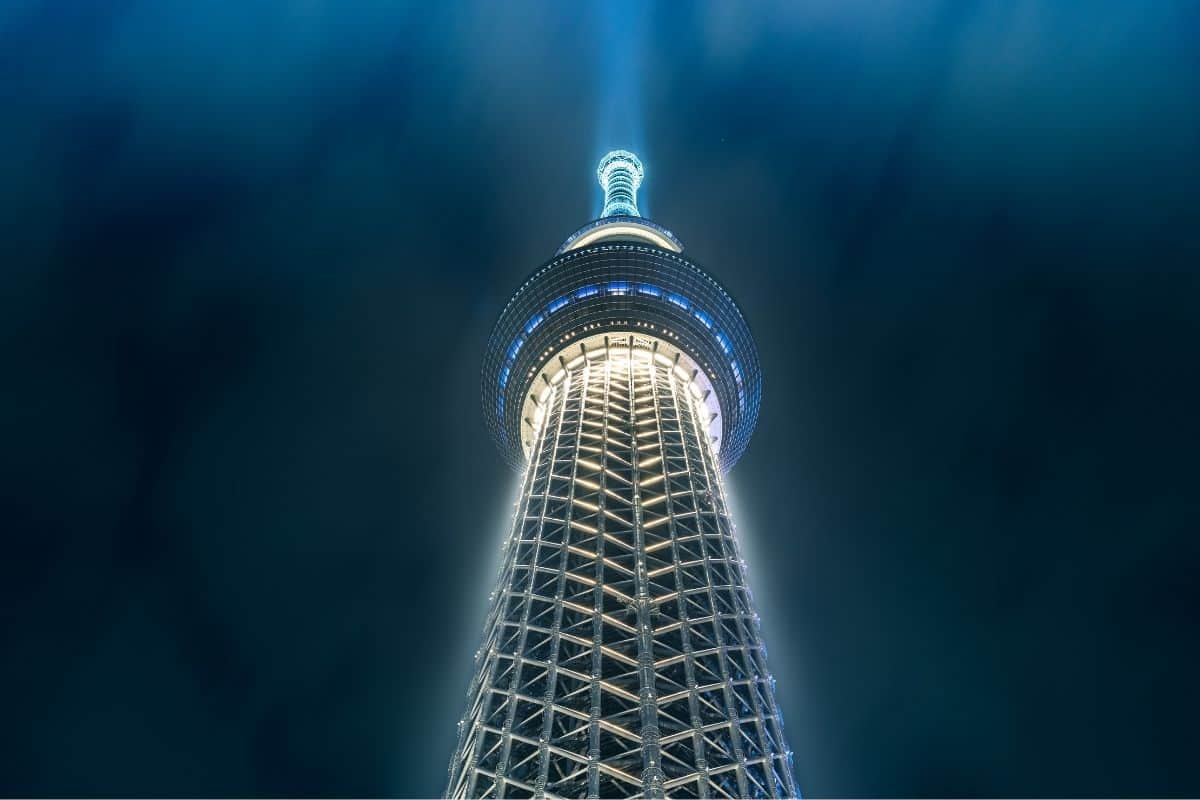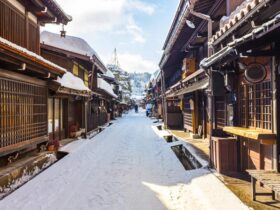It was my fourth trip to Tokyo in just a couple of years and friends and family wanted to visit Tokyo’s newest and most incredible attraction. I knew that it would be crowded as we were visiting Skytree on a Saturday and usually I would have said let’s try for a Monday or Tuesday to avoid the weekend crowds. Unfortunately, our itinerary was packed and it was the only chance to go. I was not disappointed and in my mind’s eye will I never forget how incredible the whole experience was.
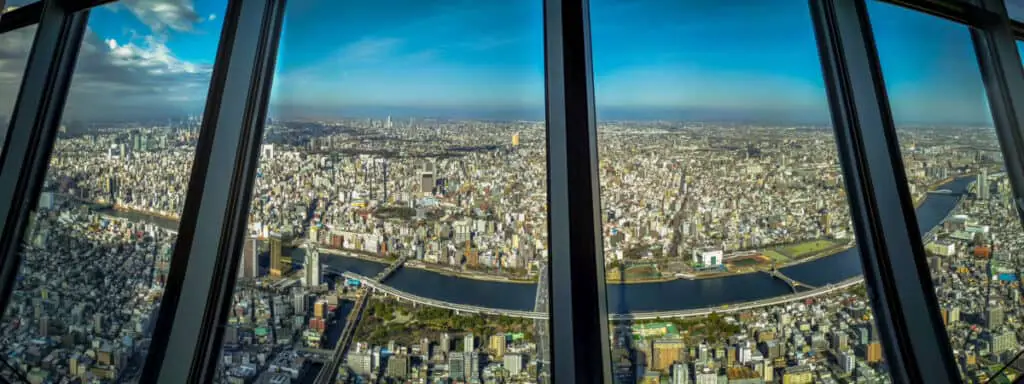
Soaring more than a half kilometer into the air, the Tokyo Skytree is, as of the writing of this article, Skytree is the world’s tallest broadcasting tower and the tallest structure in Japan.
A stunning combination of cutting-edge engineering, world-famous architecture, and even a few age-old techniques, the Skytree positively leaps into the air and contains shops, exhibits, and dining.
Tokyo and the neighborhood Skytree is built-in didn’t want an unsightly transmission tower but something to accentuate the area, something amazing people would be drawn to, even. Tokyoites both asked for an elegant design solution, something more than a simple telecommunications tower on top of a skyscraper, and the idea and plans for Skytree were born.
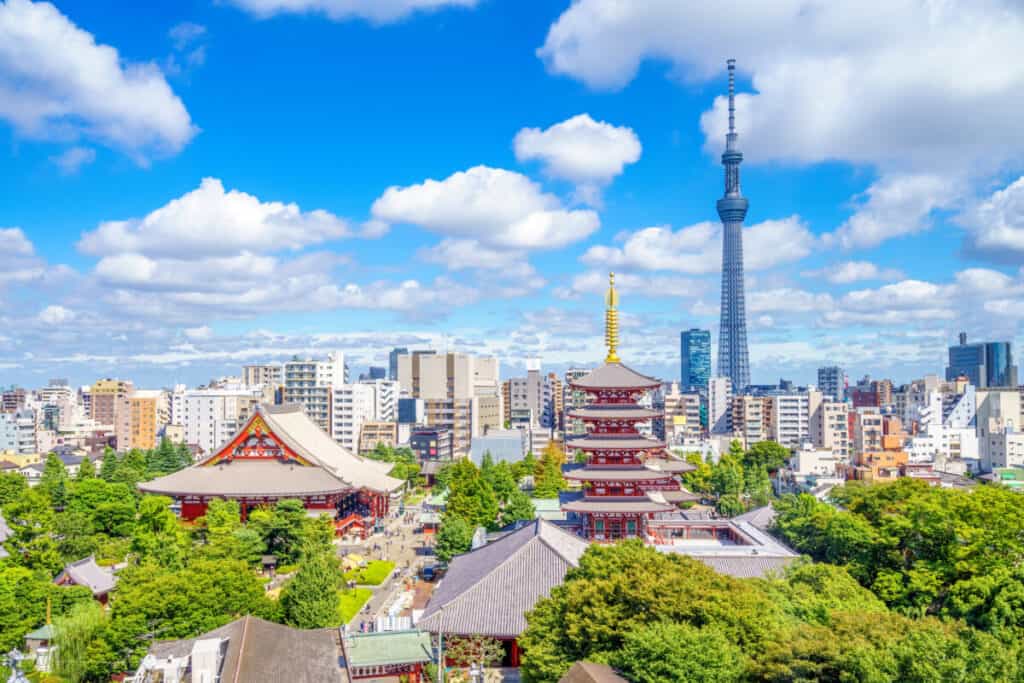
Skytrees Overall Purpose
Designed and built with an eye toward both form and function, the Skytree was designed from the ground up to not only broadcast and relay telecommunications signals but create a one-of-a-kind destination, as well.
Thrusting up from the middle of the light-industrial Sumida neighborhood, the jobs in the area had suffered from manufacturing being shipped overseas and have since been revitalized by the project.
Once a faltering neighborhood getting lost in the larger city of Tokyo, the neighborhood is now a world-famous travel destination. The minimal tripod footprint of the tower barely intrudes into the surrounding town. The impact on the locals was considered just as much as the earthquakes, winds, and future crowds the neighborhood was certain to encounter upon its completion. Tokyo itself benefits not only from the exceptional signal range but boosted tourism too.
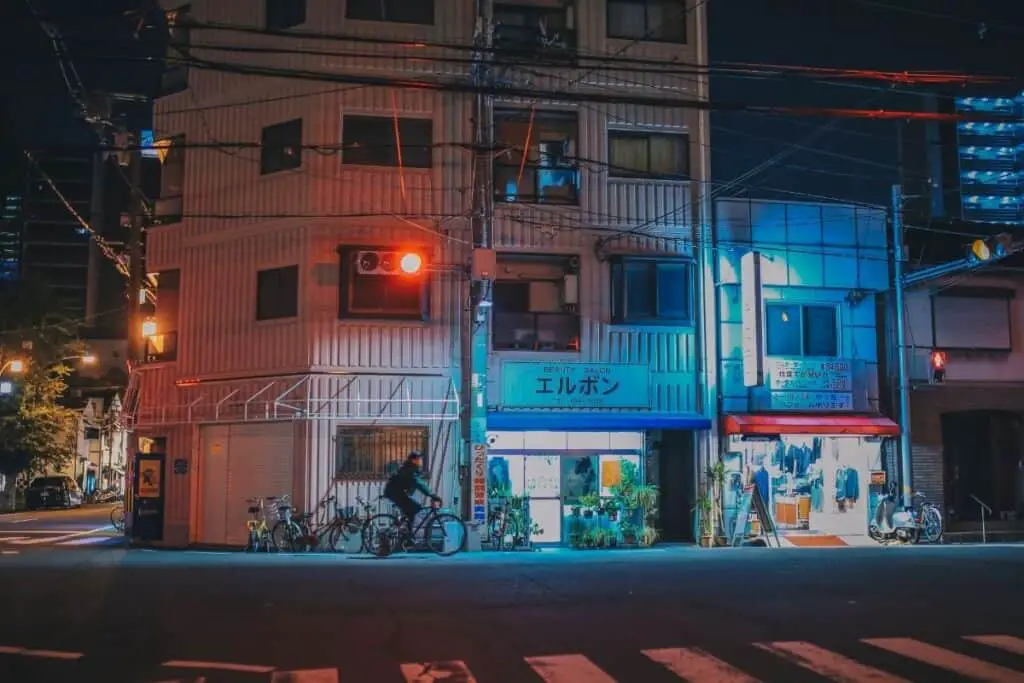
Once all the stores, interpretive exhibits, and dining were opened, The Tokyo Skytree became precisely what it was made to be: a world-class travel destination built into a transmission antenna. Painstakingly crafted to the highest precision possible, it was decided that Skytree would be as beautiful as it was functional right from the start.
While the fantastic edifice was always going to deliver line-of-sight transmissions as far as possible, the shopping, exhibits, and food ensured the design would enrich not only the Sumida area in which it was built but beyond.
The seemingly conflicting needs found harmony, and now Skytree is a success! Completed on Leap Day, February 29th, 2012, it was opened to the public on May 22. People come from all over the world for the fantastic views and stay to enjoy the local craftsmen and artist and their wares.
Tokyo Skytree Earthquake Proof
March 11, 2011: While under construction, Japan was hit with a 9.1 magnitude undersea megathrust earthquake, the biggest in Japan’s history. Causing tsunami and widespread damage, the staggering destruction and loss of life was a national tragedy that affected not only the whole country but neighboring Pacific nations, too. Amid all the chaos and damage, Skytree shook and swayed but stood strong just as it was designed to.
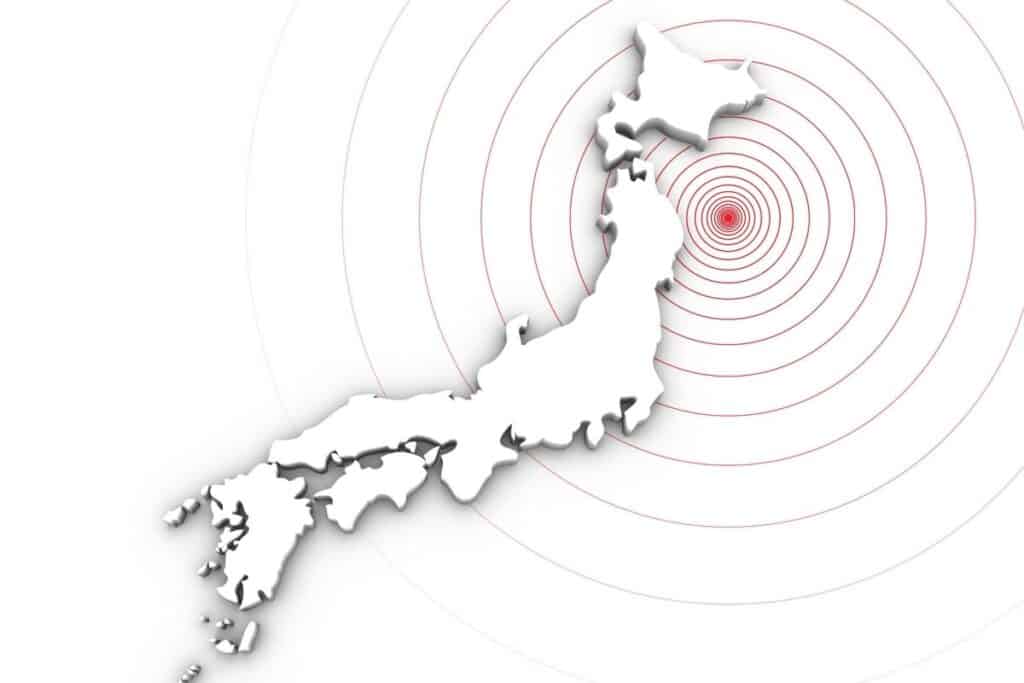
Tokyo Skytree Facts From The Ground Up
Skytree is uniquely resistant to quakes due to its hollow form and a center column down the middle, separate from the main structure after 125 meters but for a few dampeners until 350 meters.
This middle section sways at a different frequency when hit with an earthquake, cushioning the vibrations and maintaining the overall structure’s stability. One of a half-dozen earthquake countermeasures built into Skytree by the architect, the unique double wall was inspired by the physics used by Japan’s historic five-story pagodas. These structures date from the middle ages, soar majestically into the air, and are made entirely of wood. The pagoda is a kind of tower and has survived all earthquakes over the centuries in part because their hollow center and contains a central pillar, too.
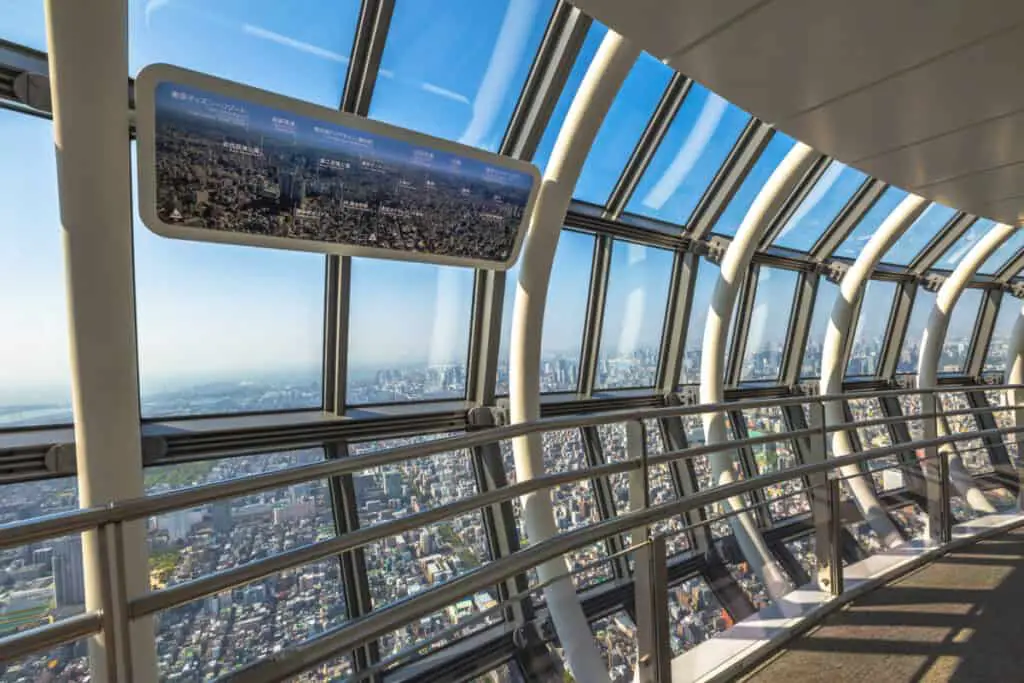
The Skytree’s footprint is a triangular base 70 meters on a side but 634 meters tall. The floors correspond to its height: Floor 350 is 350 meters above the ground and so on.
Triangles also permeate the entire tower, its trusses and external shell are all precision crafted triangles repeated and interlocked with amazing accuracy. The humble triangle is the most stable simple geometric shape: any direction you push from gets reinforced from the other sides. By linking a repeating form, it was possible to build with remarkable consistency and stability.
On average, visibility is 75 kilometers (46.6 miles) in all directions from the top Tembo Galleria.
Even monkeys fall from trees
japanese proverb
Skytree overlooks about 30 million people or one-quarter of the population of Japan! With an inviting combination of sweeping metal and glass, visitors are treated with an unparalleled view of the surrounding area while enjoying dining options, lots of unique shops, and a unique neighborhood begging to be explored.
The soft white color was explicitly created for the Skytree and is appropriately named Skytree White. Mixed to blend into the sky and surrounding city equally, it is a soft, off-white yet containing just a kiss of indigo, evoking both clouds and sky. Never one to ignore their roots, the tone actually is based on a traditional Japanese color called Aijiro. At night, the Skytree is illuminated in either sky blue or purple LED lights and alternates daily.
The original funds for the project came from a partnership between Tobu Railway and six broadcasters headed by NHK. With train stops at the adjacent Skytree and Oshiage stations, it is easy to get to. If you get lost in the neighborhood, just look to the clouds, and you can’t miss its location.
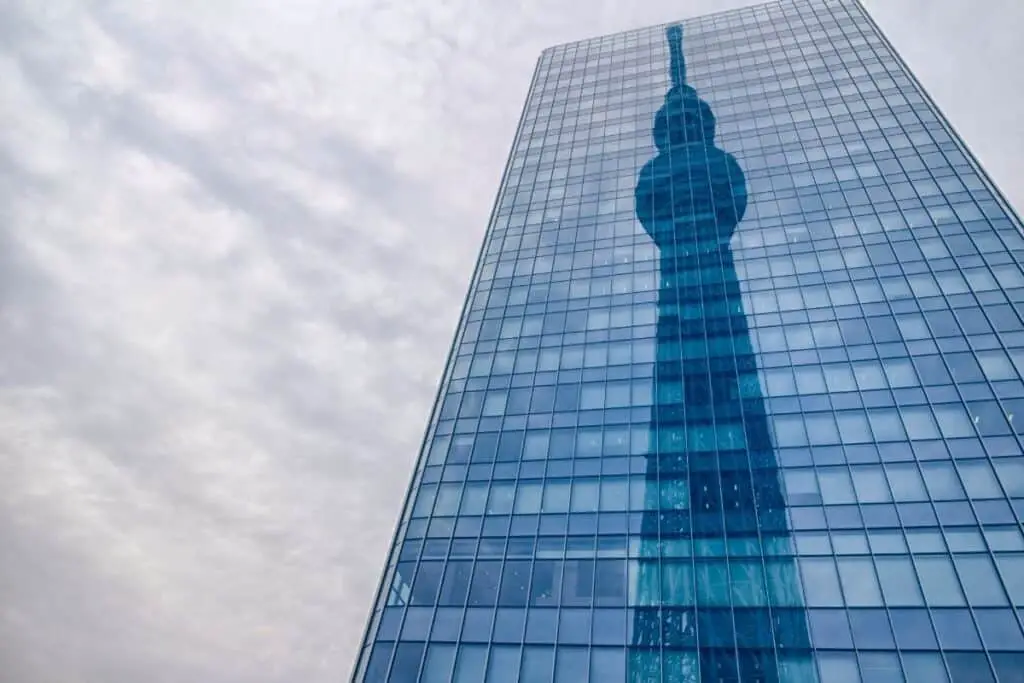
Tokyo Skytree was declared the tallest free-standing broadcasting tower by the Guinness World Records Company on November 27th, 2011. While more than half a kilometer tall, the precision it was built to are within one millimeter, meaning nothing was more than a fraction of an inch off during the entire construction.
Skytree The Tallest…
Upon completion, Tokyo Skytree displaced Canton Tower in Guangzhou, China, as the tallest tower in the world. As the tallest free-standing broadcast tower in the world.
It has become a destination in its own right, and the unique shops, exciting exhibits, and delicious food all make the trip worth taking.
Many First Time Visitors Confuse Skytree And Tokyo Tower
Not only is The Skytree quite a bit taller than Tokyo Tower, with its sweeping design it is more narrow, as well. Tokyo Tower is an older broadcast tower that was completed in 1958. Tokyo’s Skytree soars 300 meters (1082 feet) above Tokyo Tower; while Tokyo Tower tops out at 333 meters (1092 feet), the Skytree is an astounding 634 meters (2080 feet).
Visible from Skytree’s observation deck, Tokyo Tower is just one of many amazing sights visible from the top.
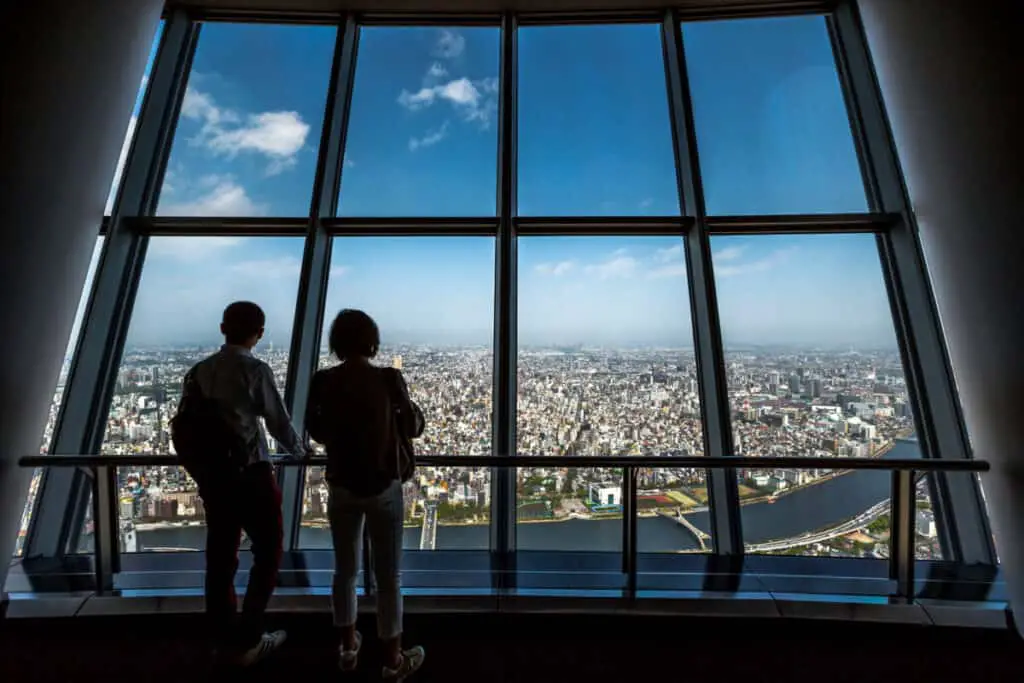
Tokyo Tower Inspired By A French Icon
You might recognize Tokyo Tower as Japan’s Eiffel Tower replica, but Tokyo Tower itself is actually nine meters (29 feet) taller than Paris’ Eiffel Tower. Tokyo Tower was built for telecommunication but could no longer handle the TV and radio traffic.
Skytree the tallest tower
While the tallest building globally is Burj Khalifa, Skytree now tops the list of dedicated broadcasting towers.
Mt Fuji from Tokyo Skytree
On a clear day, you can easily see Mt. Fuji from the Skytree’s 450 meters Tembo Galleria.
Tokyo Skytree tour
Tokyo Skytree tours are available every day of the year, though visitors should book as far in advance as possible. Holidays and weekends are also peak days, so plan accordingly. Leave your fear of heights at home but don’t forget a camera!
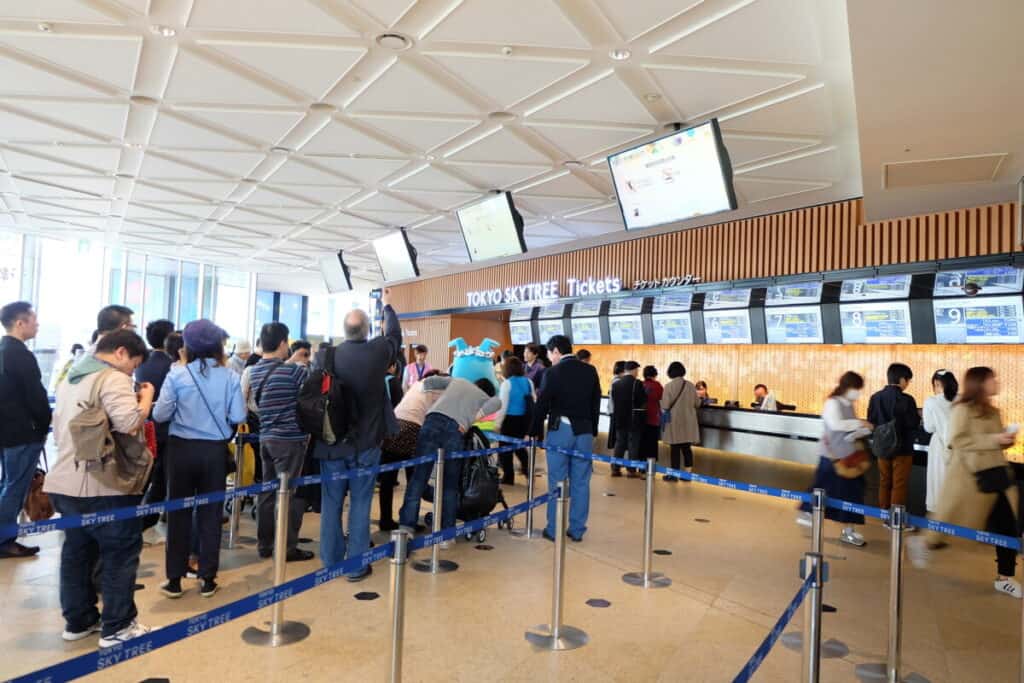
Tokyo Skytree inside
Besides views, enjoy the high-resolution digital telescopes, Skytree Round Theater (which projects dynamic images on the 110 meters long and two meters high glass of the highest desk at night), a glass floor on the Tembo Deck 340 meters (1115 feet) up, and traditional Japanese art pieces throughout. If you or someone in your group is afraid of heights, the thoughtful designers have you covered with points of interest located at the foot of the tower, as well.
The bottom floors all offer enough to entertain someone not wanting to overcome their fear of heights. The market of artisans on the ground level of the tower hosts many local artists, as well as stalls and shops that offer lots of regional items.
This area was held in reserve to showcase local talent, to make sure none of the citizens in the neighborhood felt displaced, including an active artist or two crafting right on site.
In order to highlight the area’s famous manufacturing roots, the state has started the Hai Zai (‘distribute’ ‘asset’) Program, where artists and craftspeople use local industrial cast-offs to make art and a mix of unique items. Every bit like the Up-Cycling and Recycled Art seen in the West, useful material scrap that would ordinarily be thrown away are instead repurposed, reused, and transformed into housewares, decorative items, and more.
10 Best things to do near Skytree
- Sumida Aquarium
- Konica Minolta Planetarium Tenku
- Oshiro Morihachi
- Takagi Shrine
- Byobu Museum
- Sumida Park
- Shoen-ji Temple
- Asahi Beer Headquarters
- Sumida Cultural Museum
- Edo-Tokyo Museum
Scattered throughout all the floors are samples of traditional and contemporary art from the area and Japan at large. On floor 350 is the famous Painted Folding Screen: “Edo Hitomezu Byobu,” an amazing historical depiction of the land in the Edo period (Tokyo’s first original name). While you are inside, don’t forget to check out the Beautiful Nippon Tourism Corner, where the city of Tokyo and the country of Japan have collected some excellent suggestions of what to do next. Visitors to the area might also find the Sumida Aquarium interesting, located in the Tokyo Solamachi complex.
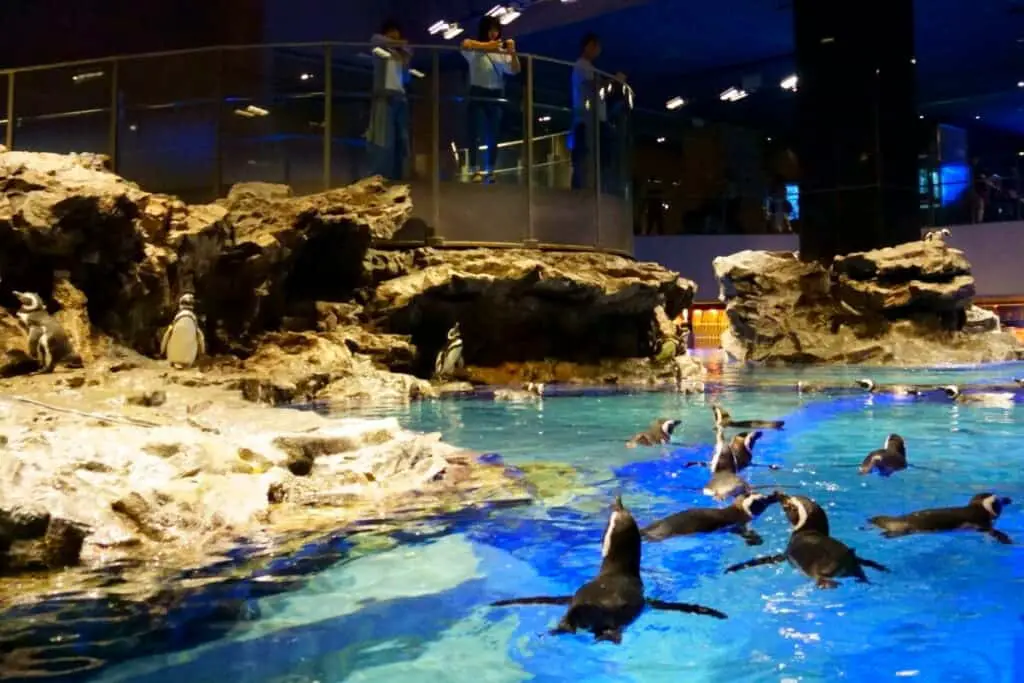
You do need a ticket to take advantage of the organized tours or gain access to the upper decks. However, much of the tower’s lower area can be accessed free of charge. Visitors wishing to take full advantage of the viewing platforms will be charged between 500 and 3100 Yen, depending on age, which floors you want to visit, and whether or not it is peak time.
A Combo Ticket is really recommended, and plan on spending a least a couple of hours, too. There is just so much to see and do; it would be a shame if you had to hurry through the place. Dawn and Dusk are highly recommended, as the change from day to night in the evening unveils a sea of twinkling lights across the skyline of Tokyo, and the rising sun and clear air of morning give you unprecedented viewing. Any time you visit is going to be amazing, Just make sure and give yourself enough time to take it all in.
Starting at just 1,000 ¥ for an adult to access only the highest Tembo Galleria deck off-peak, if you want access to both the Tembo Galleria and the Tembo Deck on a weekend or holiday, it will be 3,100 ¥.
Skytree prices
| Prices in Japanese Yen | Over 18 years | 12-17 years | 6-11 years | Under 5 years |
| TOKYO SKYTREE Combination ticket access to Floor350+450 (weekdays Monday thru Friday) | 3,100 | 2,350 | 1,450 | FREE |
| TOKYO SKYTREE Combination ticket access to Floor350+450 (Weekends and Holidays) | 3,400 | 2,550 | 1,550 | FREE |
| TOKYO SKYTREE TEMBO DECK Floor 350 (access to Tembo deck only) (Weekdays Monday thru Friday) | 2,100 | 1,550 | 950 | FREE |
| TOKYO SKYTREE TEMBO DECK Floor 350 (access to Tembo deck only) (Weekends and Holidays) | 2,300 | 1,650 | 1,000 | FREE |
| TOKYO SKYTREE TEMBO GALLERIA Floor 450 Only (Weekdays Monday thru Friday) | 1,000 | 800 | 500 | FREE |
| TOKYO SKYTREE TEMBO GALLERIA Floor 450 Only (Weekends and Holidays) | 1,100 | 900 | 550 | FREE |
Tokyo Skytree tickets
Tokyo Skytree restaurant
Tokyo Skytree hosts a world-class restaurant and quaint cafe, as well. The Sky Restaurant 634 Musashi is a fine dining experience 345 meters up with a 360 panorama view. When Six Thirty-Four (the height of the tower) is read in the old Japanese numbers, it is pronounced “Mu-Sa-Shi”. Musashi offers a thoughtful balance of delicious French and Tappan dishes every day. With such a diverse menu, there is a taste for every palette as dazzling as the view of the city.
If a high-end sit-down dining experience is not a part of your plan, there (and a little bit more modest) is the Skytree Cafe, at 345 meters. Check out the gift shop on the ground floor for a souvenir, as the views themselves will be unforgettable and your photos are a keepsake that you will look back to for many years.
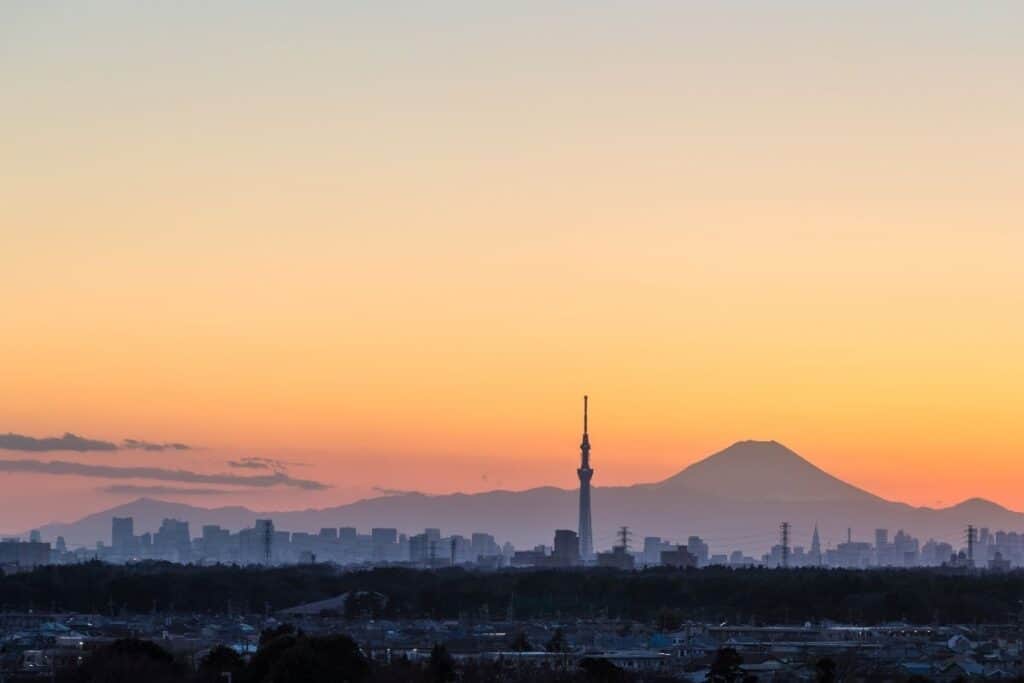
Even now I plan on visiting Tokyo’s biggest tourist trap. Yes, I know it is such, but I can’t forget the experience and plan to spend even more time in the area and perhaps get a sunset included with my visit. My personal recommendation is to set aside at least three to four days to see Skytree and the surrounding neighborhood and its interest.

